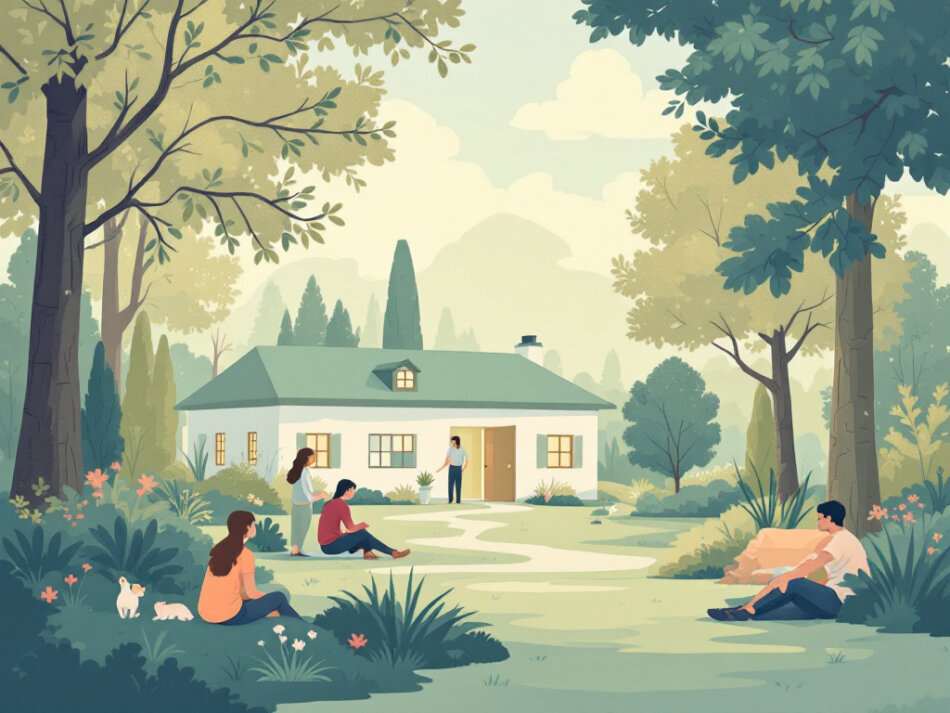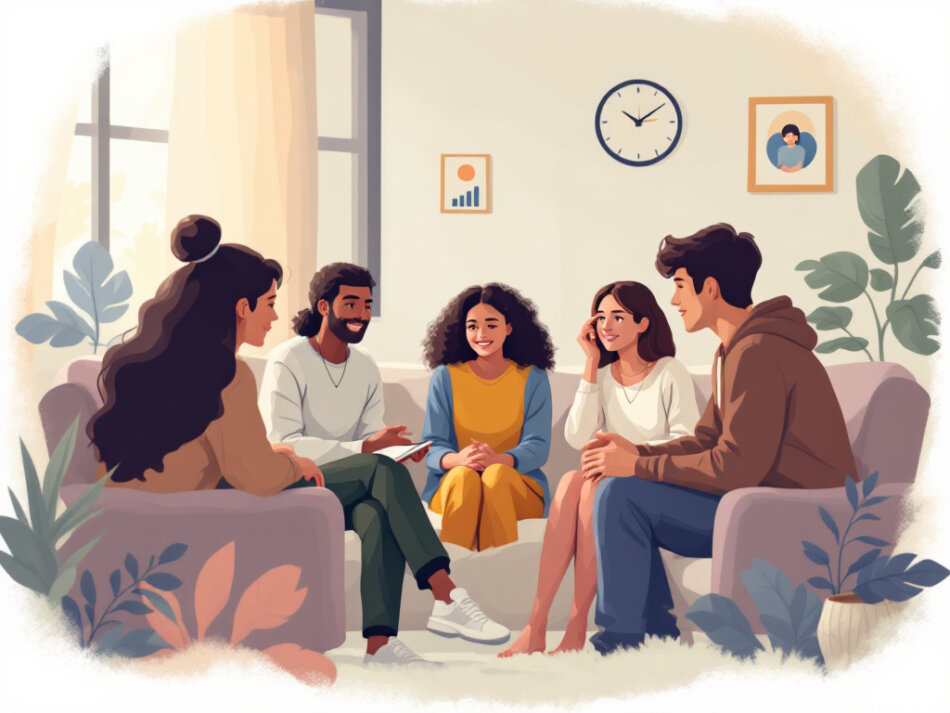Understanding teen holistic therapy
Your search for a teen holistic therapy program begins with understanding how integrative care can address the full spectrum of your child’s needs. A teen holistic therapy program blends clinical therapy with creative, experiential, and wellness-focused approaches to treat emotional, physical, social, and spiritual dimensions of health. By combining evidence-based practices—such as family support sessions and mindful movement—with expressive therapies and outdoor adventures, these programs foster lasting transformation for adolescents who struggle in traditional talk therapy settings.
Holistic therapy programs work alongside licensed clinicians to ensure your teen receives both specialized care and necessary mental health treatment. Whether your child engages in art and music sessions or bonds with a therapy horse, each activity ties back to core therapeutic goals: emotional regulation, self-confidence, effective communication, and resilience. Because many of these programs accept insurance, you can pursue an integrative experiential therapy for teens solution without shouldering excessive out-of-pocket costs.
Exploring therapy program benefits
When you enroll your teen in a holistic therapy program, you open the door to benefits that extend beyond symptom relief. These programs are designed to empower your child by:
- Building emotional regulation skills. Experiential and creative exercises help teens identify and manage intense feelings in real time, reducing impulsive behaviors and improving stress management.
- Enhancing self-confidence. Mastering new activities—whether painting an abstract canvas or navigating a wilderness trail—boosts self-esteem and reinforces a sense of achievement.
- Strengthening communication. Group-based expressive therapy and family sessions teach teens to articulate thoughts and feelings, improving relationships at home and school.
- Fostering social connection. Shared community outings and peer support activities ease loneliness, promote empathy, and create a network of understanding.
- Supporting physical wellness. Yoga, movement therapy, nutrition guidance, and equine care contribute to overall health, which in turn supports emotional balance and cognitive focus.
- Encouraging aftercare and continuity. Many programs include planning for ongoing counseling, support groups, and family check-ins to maintain gains long after residential stays or intensive phases end.
By emphasizing a holistic approach, these programs address root causes—co-occurring anxiety, depression, trauma, and substance use—instead of focusing solely on symptoms. This integrative style of treatment can shorten overall healing time and improve the likelihood of sustained recovery [1].
Reviewing core components
High-quality teen holistic therapy programs share several key elements. Understanding these components will help you evaluate options that align with your child’s unique needs.
Expressive modalities
Creative expression lies at the heart of many holistic programs. By tapping into art, music, drama, and movement, teens can explore complex emotions in nonverbal ways. Key modalities include:
- Art and music therapy: Through painting, sculpting, songwriting, and improvisation, your teen learns to externalize and process feelings. These sessions often integrate with talk therapy to reinforce insight and coping strategies. See our guide to art and music therapy for teens.
- Drama and play therapy: Role-playing and storytelling exercises help teens rehearse healthy social interactions and confront fears in a safe environment.
- Expressive therapy for teens: A broad umbrella that may include creative writing, poetry, and digital media projects, tailored to meet adolescents where they are most comfortable. Learn more about expressive therapy for teens.
By providing alternative channels for emotional release, expressive modalities can be particularly effective for teens who struggle with verbalizing their inner experiences [2].
Experiential modalities
Experiential therapies immerse teens in hands-on activities that challenge and engage them physically, mentally, and emotionally. Common approaches include:
- Equine therapy: Working with horses fosters trust, responsibility, and nonverbal communication skills. Research shows equine interactions can reduce anxiety and promote self-awareness [3].
- Outdoor and adventure therapy: Hiking, ropes courses, and wilderness expeditions encourage problem-solving, teamwork, and resilience. Check out outdoor therapy and adventure programs for teens and adventure therapy for teen recovery.
- Therapeutic recreation: Structured community outings—volunteering, team sports, and group art projects—build social skills and a sense of purpose [4].
- Integrative experiential therapy for teens: Programs that blend multiple experiential elements into a cohesive treatment plan, ensuring each activity supports clinical goals. Explore integrative experiential therapy for teens.
Experiential modalities allow teens to learn and practice coping strategies in real-world contexts, reinforcing progress made in therapy sessions.
Mindfulness and movement
Holistic programs often incorporate mindfulness practices and gentle movement to cultivate present-moment awareness and body-mind connection. Typical offerings include:
- Mindfulness and yoga therapy: Breathwork, meditation, and yoga postures help teens develop focus, calm racing thoughts, and regulate emotions. Learn more about mindfulness and yoga therapy for teenagers.
- Experiential DBT and mindfulness: Skills-based training in distress tolerance, emotion regulation, interpersonal effectiveness, and mindfulness tailored for adolescents [5].
- Movement therapy: Dance, martial arts, and somatic exercises promote body awareness, self-expression, and stress reduction.
These practices complement clinical therapies by offering practical tools your teen can use daily to navigate triggers and maintain balance.
Family support and life skills
Holistic programs recognize that sustainable teen wellness depends on a supportive home environment and practical life skills. Components often include:
- Family support sessions: Guided education for parents and caregivers on communication strategies, emotional coaching, and rebuilding trust. These sessions strengthen relationships and create a unified approach to your teen’s growth [1].
- Life skills training: Workshops on money management, job applications, time management, and academic planning equip teens for success beyond therapy.
- Aftercare planning: Structured roadmaps for ongoing therapy, peer support groups, and community resources to maintain progress post-treatment [6].
By involving the whole family and focusing on daily living skills, holistic therapy prepares teens and their caregivers for long-term stability.
Evaluating evidence and outcomes
Credible data underscores the effectiveness of holistic therapy programs. Reviewing outcome reports and published studies can help you make an informed decision.
Holistic treatment at Rogers Behavioral Health
The Teen Recovery Program at Rogers Behavioral Health in West Allis integrates emotional health, physical wellness, nutrition, sleep, spiritual care, and family support to address mental health challenges in adolescents. Key findings include:
- Shortened overall treatment time due to simultaneous care of interconnected issues like substance use and anxiety [1].
- Improved family relationships and teen self-awareness through parent/caregiver education sessions.
- Enhanced empathy, confidence, and practical life skills via community outings and experiential activities.
Outcomes at Muir Wood Teen Treatment
As of 2025, Muir Wood Teen Treatment reports robust success rates for its specialized holistic program combining therapy, psychiatry, nursing, experiential activities, and academics [6]. Highlights include:
- Sustained recovery and fewer relapses among teens who completed evidence-based treatment with family involvement.
- Higher emotional stability and global recovery scores compared to national averages.
- Strong parental satisfaction, with reports of significant improvements in teens’ mental and emotional health.
- Emphasis on aftercare support, demonstrating that teens who attend ongoing counseling and group sessions maintain sobriety at higher rates.
Creative therapy outcomes
Silver State Adolescent Treatment’s holistic mental health programs, combining traditional counseling with alternative methods like art therapy, yoga, nutritional guidance, and family therapy, report:
- Increased resilience and healthier coping skills.
- Reduced symptoms of anxiety, depression, and emotional distress.
- Gains in self-expression and emotional regulation through trauma-sensitive creative modalities [7].
A 2017 randomized controlled study in India also demonstrated that an 8-session holistic group health promotion program significantly reduced stress, depression, and anxiety among adolescent girls, supporting the value of integrative interventions [8].
Choosing insurance-friendly programs
Many teen holistic therapy programs accept major insurance plans, making integrative care accessible. To find a program that works with your provider:
- Verify coverage. Contact your insurance company to confirm mental health and addiction treatment benefits, including outpatient, intensive outpatient, and residential services.
- Review in-network providers. Ask for a list of accredited holistic and experiential therapy programs that accept insurance. You can also search for teen holistic therapy that accepts insurance or experiential therapy that accepts insurance.
- Ask key questions:
- Which specific modalities are covered (equine therapy, art therapy, yoga)?
- Are family sessions and aftercare planning included?
- What is the process for pre-authorization and claims?
- Compare out-of-pocket costs. Even in-network programs may require copays or deductibles. Request a cost estimate before enrolling.
- Confirm licensing and accreditation. Ensure the program holds state or national accreditation and employs licensed therapists, dietitians, and medical staff.
By doing due diligence, you can secure comprehensive holistic care without unexpected financial burdens.
Preparing to get started
Once you’ve selected a program, these steps will help ensure a smooth transition and maximize the benefits of holistic therapy:
- Involve your teen in decision-making. Discuss program options together, review activity schedules, and address any concerns or goals they have.
- Gather medical and school records. Provide complete background information—previous diagnoses, treatment history, educational accommodations—to the treatment team.
- Set clear objectives. Work with clinicians to define specific goals for emotional regulation, communication skills, academic performance, or social engagement.
- Plan for aftercare. Coordinate ongoing counseling, support groups, and family check-ins before your teen graduates from the program. Look into residential therapy with holistic programming for teens if overnight care is needed.
- Prepare the home environment. Create a supportive space with regular routines, open communication channels, and access to mindfulness tools or creative supplies.
- Stay engaged. Attend family sessions, read progress reports, and maintain contact with the treatment team to celebrate achievements and address challenges promptly.
By partnering closely with your teen and their providers, you can reinforce the gains made in therapy and support sustained growth.
A teen holistic therapy program offers a powerful alternative to traditional talk therapy, enabling your child to heal through creative expression, experiential challenges, mindful practices, and family involvement. With evidence of strong outcomes and insurance coverage options, integrative holistic therapy can transform your child’s emotional regulation, self-confidence, and communication skills—laying the groundwork for a healthier, more resilient future.











